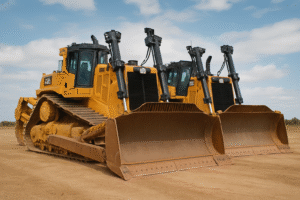It’s safe to say there is a lot going on in the childcare sector at the moment. With new centres popping up everywhere and a huge demand for spots, there’s plenty of profit to be made by savvy centre owners.
We’re certainly seeing no shortage of residential property developers getting into this sector and “jumping on the bandwagon” as they say; meanwhile, banks are getting nervous in the sector, some are pulling back on gearing and tightening conditions to keep a tighter reign on finance for the industry.
We’ve funded countless childcare centres over the years – both on a freehold construction & investment basis, as well as the operating businesses – and we’re certainly seeing more of it now than ever before.
The fundamental concern in the space is the development of centres by people with a lack of understanding about the underlying business and industry – going into the game blindly by seeing the supposedly very high demand and low yields/cap rates (high property sale prices and therefore development profits). While this can be true; investing in the childcare sector is a little more complicated than that.
So when John Wall one of the child care industry’s pioneers invited us to his Childcare Symposium in Cairns recently, we jumped at the chance to hear from the horse’s mouth what he and other industry leaders had to say.
Topics covered on the on the day were many and varied, in relation to both property and business, including but not limited to marketing, valuations, building design/architecture, town planning and performance drivers.
We saw many common themes coming from the speakers, which we considered to be little pieces of gold for anyone considering entering the childcare sector, as well as those already in it.
Here are a few of the little nuggets of gold that we took from the day:
Childcare centres haven’t always been cash cows
I’m going to go out on a limb and speculate that a big reason so many people are getting into this space is because they think that these things just print money. It’s true – they CAN – but they don’t always, and they haven’t always. Some centres are doing particularly well now because of a few key reasons:
1. For an extended period after the collapse of ABC Childcare (led by the infamous “Fast Eddie”) hardly any new centres got built. Meanwhile, we’ve had a reasonable growth in the birth rate with 270,849 births in 2006 increasing to 311,104 in 2016, this means occupancies generally increased across the industry.
2. Childcare wages (which make up a huge chunk of operating expenses) have been kept relatively low, so the profits from increased occupancies have gone straight to the bottom line.
3. In Queensland, there used to be a limit of 75 places in a centre, which kept profit per centre down. This was abolished a few years back, with most new centres now somewhere between 100 and 150 places, some “mega centres” accommodating 200+ children.
4. Government subsidies for childcare, very generous relative to other developed countries, have certainly helped encourage the sector.
5. High levels of household debt, combined with limited wage growth, have resulted in most families not being able to afford to have mum stay at home, so many kids have to go into childcare at a relatively young age.
Will these good times last forever? The last two points aren’t likely to change anytime soon; but as for point 1, well there are certainly plenty of new centres throwing open their doors and for point 2 there is certainly some upward pressure coming through now.
Childcare centres need to be run efficiently and have strong occupancies to drive profit.
Centres with outstanding occupancy and good management are cash cows, but many are not. I don’t like to sound negative, but there are probably as many centres running at a loss, or barely breaking even, as there are ones that are printing cash. It’s important for potential investors to not blindly assume that all childcare centres are cash cows.
Designing a childcare centre is much more than just where and how to build walls and a playground
The simple building design and DA path of “1. Site of X,000m2; 2. Get an architect to draw up a plan for as many child places as the town plan will allow; 3. Sign up an operator on the highest rent and longest lease possible” is a risky game.
These are highly specialised assets, with a very specific underlying business model; so there’s a huge hidden risk in playing a simple numbers game and poorly thought out architecture.
Design of the child care building should be interlinked with regulatory staff to child ratios to maximise the efficiency of the business. Playgrounds are important – and there are some pretty wild new ideas out there which many kids and parents will love; but if you’re building a childcare centre in Toorak, where little Johnny is dropped off in a $400 outfit, do you think Mum is going to be impressed when he comes home covered in mud from play time in the mud pit?
Then there are the things that don’t affect the kids so much such as car parking. As an example, we throw back to the story of a not so well-designed car park which caused enough angst between two mums trying to get in and out that they wound up rolling around on the pavement pulling each other’s hair out.
As with any business or property project, consideration for the end user is a critical success factor. It doesn’t matter how good your initial lease is, or how many places you get the council to approve if mums don’t want their kids in your centre and/or the underlying demand for the centre is not there, the business (and therefore the property investment) will eventually fail.
Sourcing Staff
One of the critical success factors in any business is staff, but perhaps this can be said even more so of childcare centres. If parents don’t like the attitudes, personalities or approaches of the people that are looking after their children, they’re either going to look somewhere else, or become your worst nightmare. During the conference, we were told of two almost identical brand-new centres owned by one operator – one achieved 90% occupancy with a few months, the other only achieved 40% occupancy after a year, and was losing money rapidly. What was the biggest difference? The Staff.
Brand experience is important and touchy-feely – but, customers choose a childcare centre based on their feelings. The business needs to build a “this is who we are” story with its community, and the best centres identify this even before any building design work has started.
Closely related to this, an online marketing strategy is paramount in the lead up to a new centre opening, as roughly 80% of parents look for their childcare centres online (plus a healthy dose of Facebook engagement from parents, which includes the good and the bad).
“The underlying business isn’t my problem – I have a long-term tenant at a high rent.”
We have heard of cases where potential operators are fighting for leases. While you might take this as a good reason to demand higher rent, there’s a number of reasons why you should think carefully about making this call when it comes to childcare centres. Here’s just a few:
1. Childcares can be lucrative businesses, but as we’ve just shared, this definitely isn’t the case for all. Some work, some don’t. The major variables for success tend to be difficult ones to control. E.g. people, culture, community, and accessibility.
2. Consider the competitiveness of the local area, as this will have a major impact on the profitability. Two operators within 5km of each other realistically can’t have a major fee variance.
3. Look at the numbers. And keep in mind that there is an award wage. Whilst the number of staff required is not up to how efficient the operator tries to be, there is regulation directing the staff to child ratio; therefore wage cost relative to revenue can’t change drastically. With a very large chunk of gross revenue having already been chewed up by wages, the next major cost – being rent – takes another good chunk of what’s left.
So, if the rent is too high for what any reasonably operated centre in that catchment area can sustain, there’s a pretty fair chance that your tenant may eventually default on their rent and their business will fail. Since you’re sitting on a highly specialised property asset, who are you going to replace your tenant with? No prizes for guessing that you’ll need to find another childcare operator.
Summary
Childcare really is a great sector – and even with talk of oversupply, there is genuinely a lot of great opportunity out there. Just don’t go in with your eyes closed. If you want to play in a specialised sector, take the time to learn about it – what the critical success factors are, the profit drivers, what the best operators do. Most importantly – never forget the end user – this rule applies to every business in every industry, including each property sector.
At the end of the day, if you build a business or a property that genuinely fits with the needs and wants of the end user, you’ll probably be successful.
Enough from us. Oh, except for the plug. We’ve funded many properties and businesses in childcare. We’ve seen ones go well and we’ve seen ones go not so well. We leverage our relationships in this industry to help our clients – including those referenced below. So, if you’re in childcare, or you want to get into it – and you need money to fund it – send us an email or pick up the phone and call us, we would love to help you be successful in childcare!
Special thanks to the following people, whose views and advice at the Symposium were included in the content of this blog:
· John Wall, John Wall Childcare
· Daniel Hunjas, Edge Marketing
· Darren Trivett, Darren Trivett Childcare Valuations
· Michael Lyell, Adams + Sparkes Town Planning & Development




1 thought on “Childcare – is it the cash cow it’s cracked up to be?”
Choosing the best childcare centre out of available choices is very difficult. You must be well aware of the surroundings, safety, child to teacher ratio, hygiene, food, fees, flexible working hours before investing. Play Based Learning Preschool are specially designed to make learning more enjoyable and fun. Thanks for providing these useful tips.